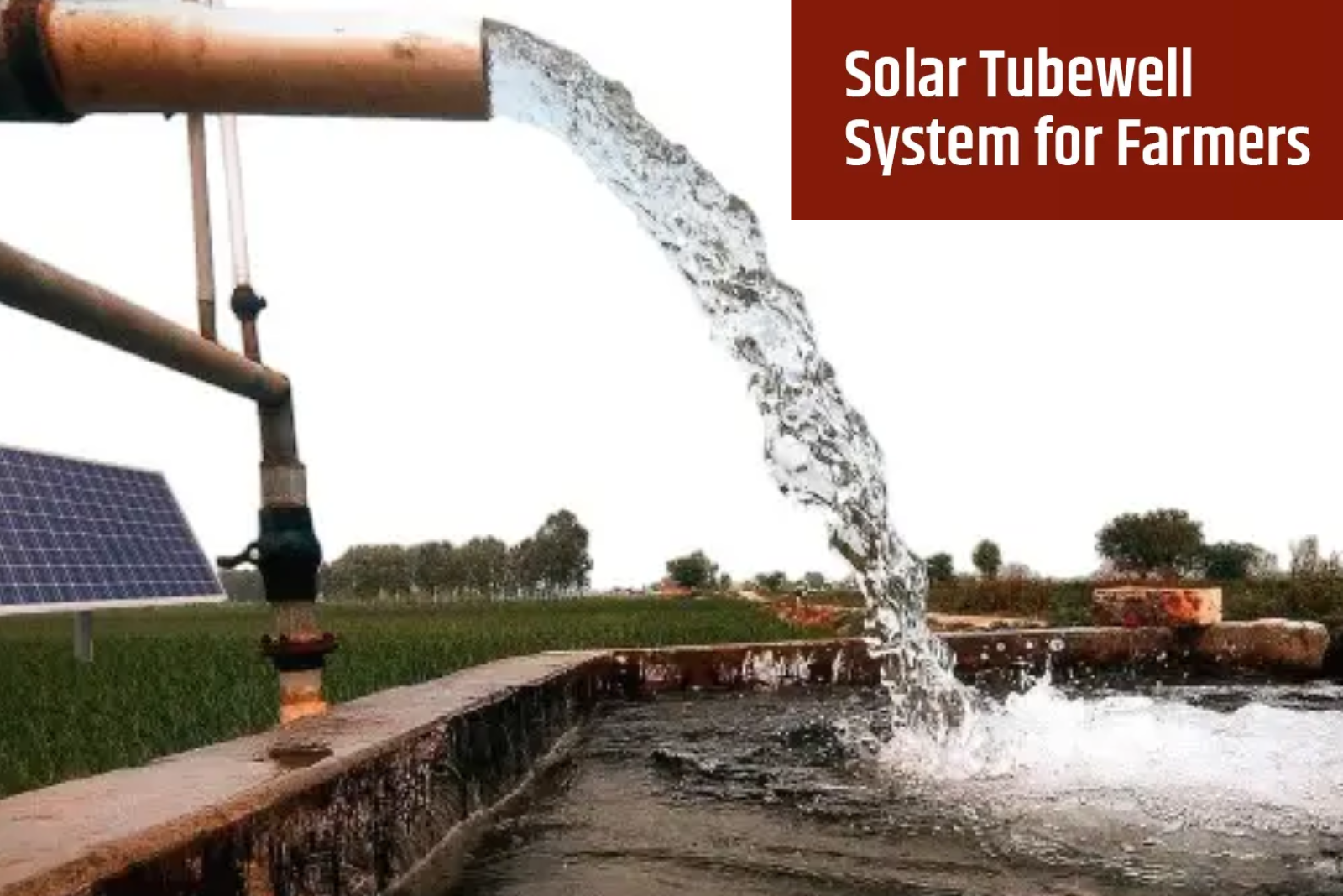Solar Tubewell System for Farmers
- Home
- Blogs

Power cuts, rising fuel prices, and limited electricity supply are some of the everyday challenges Indian farmers face — especially when it comes to irrigating their fields. For those using tubewells, the cost and uncertainty of running pumps can make farming harder. But now, there’s a cleaner, more reliable way to solve this problem: the solar tubewell system.
In this blog, we’ll explain what a solar tubewell system is, how it works, its benefits, and why it’s becoming a trusted solution for agriculture across India.
What is a Solar Tubewell System?
A solar tubewell system uses sunlight to power a pump that pulls underground water through a tubewell. It includes solar panels, a pump controller (or inverter), and the pump itself. Since most farmers need water during the day, solar power matches perfectly with the irrigation schedule.
With solar, there’s no need for diesel refills or waiting for grid electricity — just sunlight, which is free and available almost every day in most parts of India.
Also Know: Power Backup Options
How Does It Work?
The system works like this:
Solar panels convert sunlight into electricity
This electricity powers the water pump
The pump draws water from a borewell or tubewell
Water is delivered to fields using pipes, drip systems, or canals
It’s a straightforward system that brings a lot of value to farmers, especially in off-grid or low-power areas.
Also Read: Solar Products for Home
Types of Solar Pumps Used in Tubewells
There are two common types of solar-powered pumps:
1. Surface Solar Pumps
Installed above the water source
Ideal for shallow water levels like ponds or open wells
Easier to maintain
Suitable for small farms and gardens
2. Submersible Solar Pumps
Installed deep inside borewells or tubewells
Designed for pulling water from deeper underground levels
Suitable for medium to large farms
Offers steady and strong water flow
Why Farmers are Switching to Solar Tubewells
Solar tubewell systems solve many problems that come with fuel-based and electric pumps:
- No electricity or fuel cost after installation
- Works even in remote villages with no grid power
- Low maintenance with long system life
- Eco-friendly – no smoke, noise, or pollution
- Matches irrigation hours – water when the sun shines
- Simple and safe for daily use
Where Can These Systems Be Used?
Solar tubewells are perfect for:
Crop irrigation (wheat, rice, sugarcane, cotton, vegetables)
Fruit orchards and nurseries
Fish farming ponds
Livestock water needs
Greenhouses and small polyhouses
Support from the Government
The Indian government is actively encouraging the use of solar in agriculture through various subsidy programs.
PM-KUSUM Yojana
Offers subsidies to farmers for setting up solar pumps
Supports both off-grid and grid-connected systems
Focused on reducing diesel usage and improving irrigation
Helps small and marginal farmers benefit from solar energy
State Government Schemes
Several states offer their own solar pump programs — with simplified procedures and additional financial help.
KLK Ventures assists farmers with all documentation and approvals needed to apply for these subsidies.
KLK Ventures – Helping Indian Farmers Go Solar
At KLK Ventures, we help farmers across India adopt solar energy in the simplest, most affordable way.
Our services include:
- Free land and site surveys
- Expert guidance on pump selection
- Supply and installation of full solar tubewell systems
- Government subsidy application support
- On-site testing and after-sales service
Important Tips Before Installing a Solar Tubewell
Here are a few things to keep in mind before setting up your system:
- Check water depth – deeper wells need submersible pumps
- Ensure open space for solar panel installation
- Clean the panels once a month to maintain efficiency
- Keep documents like land records and Aadhaar ready for subsidy
- Use drip systems to make the most of water output
FAQs
Q1. Do solar tubewells need batteries?
No, most systems work without batteries during sunlight hours.
Q2. Will it work on cloudy days?
Yes, but performance may be slightly reduced. It works best on sunny days.
Q3. Is maintenance costly?
No. Basic maintenance includes cleaning panels and checking wiring.
Q4. Can I use solar tubewells for drip irrigation?
Absolutely. They’re perfect for modern water-saving systems.
Q5. Can KLK Ventures help with government subsidies?
Yes, we guide farmers through the full process of subsidy approval.
Q6. How long does the system last?
Solar panels can last over 20 years, and pumps typically last 8–10 years.
Q7. Where can KLK Ventures install these systems?
We offer pan-India service and support. Contact us to check availability.
